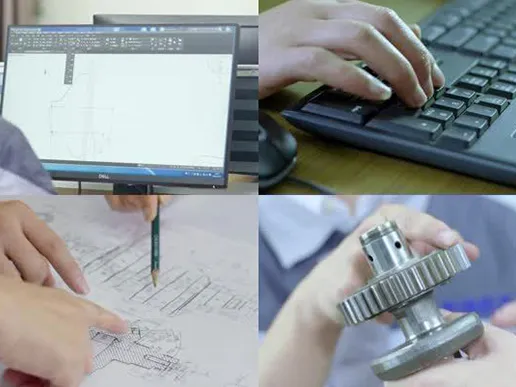Dec . 01, 2024 19:32 Back to list
Leading Manufacturers of Hydraulic Submersible Slurry Pumps for Efficient Fluid Transfer Solutions
The Role of Hydraulic Submersible Slurry Pumps in Industrial Applications
Hydraulic submersible slurry pumps are pivotal in various industrial applications, particularly in sectors such as mining, construction, and wastewater treatment. These powerful pumps are specifically designed to handle abrasive and viscous fluids, making them indispensable in operations where solid materials are present. Their robust construction and efficient performance set them apart in the market, leading to a surge in the demand for reliable manufacturers.
Understanding Hydraulic Submersible Slurry Pumps
At their core, hydraulic submersible slurry pumps operate under the principle of hydraulic energy conversion. These pumps are characterized by their ability to function underwater, which allows them to pump slurries—homogeneous mixtures of solids and liquids—directly from the source. Unlike traditional pumps, which may require priming and are exposed to air, submersible pumps can continuously operate while submerged, leading to increased efficiency and reliability.
The design of a hydraulic submersible slurry pump typically includes a motor casing, impeller, and a volute that facilitate the movement of slurry. The motor is often located above the fluid level and drives the pump through hydraulic pressure, which is more efficient than mechanical drive systems, especially in challenging environments.
Advantages of Using Hydraulic Submersible Slurry Pumps
1. High Efficiency Hydraulic submersible slurry pumps are known for their outstanding efficiency, especially when handling high-density slurries. This efficiency translates into reduced operational costs and increased productivity.
2. Versatility These pumps can handle a wide range of materials, including sand, gravel, and other abrasive substances, making them suitable for various applications. This versatility is particularly valuable in mining operations, where different types of slurry are produced.
3. Durability With components often made from high-grade materials resistant to wear and corrosion, hydraulic submersible slurry pumps are built to last, providing reliable service even in harsh environments.
4. Reduced Labor Costs Because these pumps can operate autonomously once submerged, they reduce the need for manual labor in pumping operations. This leads to safer working conditions and lower labor costs.
hydraulic submersible slurry pump manufacturers

Key Considerations When Choosing a Manufacturer
When selecting a hydraulic submersible slurry pump manufacturer, several factors should be taken into account to ensure product quality and reliability
1. Experience and Reputation Manufacturers with a strong track record and positive reviews are more likely to provide high-quality products. Researching industry reputation can help you make an informed choice.
2. Technical Support and Service A reputable manufacturer should offer extensive technical support, ensuring that any issues can be quickly addressed. This includes after-sales service, parts availability, and troubleshooting assistance.
3. Custom Solutions Every project may have unique requirements, so it’s beneficial to choose a manufacturer that can provide customized solutions. Tailored options can significantly enhance performance in specific applications.
4. Certifications Quality certifications such as ISO, CE, or other relevant certifications can serve as indicators of a manufacturer's commitment to quality and safety standards.
5. Information and Resources A manufacturer that provides comprehensive resources, such as product documentation, user manuals, and maintenance guides, can help users better understand and maintain their equipment.
Conclusion
Hydraulic submersible slurry pumps play an integral role in modern industrial processes, and selecting the right manufacturer can significantly impact operational efficiency and reliability. As industries continue to evolve and expand, the demand for innovative and reliable pumping solutions will only grow. By choosing a trusted manufacturer with a proven track record, businesses can ensure they have the right tools to tackle even the most challenging slurry-handling tasks effectively. As technology advances, the future of these pumps looks promising, with ongoing innovations likely to enhance their performance and applications even further.
-
High Quality Slurry Pump Seals Reliable China Suppliers & Manufacturers
NewsJun.24,2025
-
High Quality Portable Submersible Slurry Pump Supplier & Manufacturer from China
NewsJun.10,2025
-
Slurry Pump Parts Manufacturer – High Quality Rubber Spare Parts from China
NewsJun.10,2025
-
High Quality 1/3 HP Submersible Sump Pump with Vertical - Reliable Supplier & Factory Price
NewsJun.10,2025
-
High-Efficiency Centrifugal Slurry Pumps India
NewsJun.10,2025
-
High Quality Warman Centrifugal Slurry Pump Suppliers & Factory
NewsJun.10,2025
